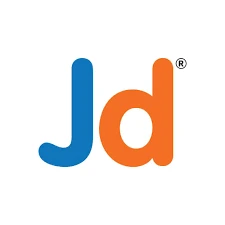Microsoft Power BI case studies cover a diverse range of processes and applications across industries, showcasing its ability to transform raw data into actionable insights. These case studies often focus on topics such as sales and marketing analytics, where Power BI is used to analyze sales performance, customer segmentation, and marketing campaign effectiveness. Financial analytics case studies demonstrate how Power BI helps monitor financial metrics, such as revenue, expenses, and profitability, integrating data from multiple sources for comprehensive financial reporting. Operational analytics highlight Power BI's role in optimizing production metrics, supply chain performance, and inventory management through intuitive dashboards and real-time data visualization. Human resources analytics showcase Power BI's capabilities in analyzing workforce demographics, performance metrics, and recruitment effectiveness to enhance HR strategies. Customer analytics case studies illustrate how Power BI is used to understand customer behavior, satisfaction levels, and retention strategies through CRM data analysis and customer insights. Healthcare analytics case studies demonstrate Power BI's impact on patient outcomes, hospital operations, and healthcare provider performance by analyzing clinical data and operational metrics. These case studies collectively emphasize Power BI's versatility in transforming complex data into actionable insights across various sectors, driving informed decision-making and operational efficiencies.
Microsoft Power BI case studies typically revolve around leveraging the capabilities of Power BI to solve real-world business challenges and enhance decision-making processes. Here are some common topics covered in Power BI case studies:
- Sales and Marketing Analytics
- Analyzing sales performance across regions, products, or sales channels.
- Creating interactive dashboards to monitor sales KPIs (Key Performance Indicators) in real-time.
- Visualizing marketing campaign effectiveness and ROI (Return on Investment) using campaign analytics.
- Financial Reporting and Analysis
- Creating financial dashboards to visualize revenue, expenses, and profitability trends.
- Generating balance sheet, income statement, and cash flow statement reports.
- Performing variance analysis and forecasting financial metrics based on historical data.
- Operational Efficiency and Supply Chain Management
- Monitoring supply chain performance metrics such as inventory levels, lead times, and supplier performance.
- Optimizing production schedules and resource allocation using operational analytics.
- Visualizing operational KPIs to identify bottlenecks and improve efficiency.
- Customer Insights and CRM Analytics
- Analyzing customer behavior and segmentation to identify high-value customer segments.
- Creating customer retention dashboards and churn analysis reports.
- Integrating Power BI with CRM systems like Salesforce for comprehensive customer analytics.
- Human Resources and Employee Performance
- Tracking HR metrics such as employee turnover, recruitment effectiveness, and training ROI.
- Visualizing workforce demographics and performance metrics.
- Analyzing employee engagement survey results and HR analytics for strategic workforce planning.
- Healthcare Analytics
- Analyzing patient data and healthcare outcomes to improve patient care and operational efficiency.
- Visualizing healthcare KPIs such as patient wait times, bed occupancy rates, and treatment outcomes.
- Monitoring healthcare facility performance and resource utilization.
- Social Media and Digital Marketing Analytics
- Integrating social media data (e.g., Facebook, Twitter) to analyze engagement metrics, sentiment analysis, and campaign performance.
- Visualizing website traffic, conversion rates, and digital marketing campaign effectiveness.
- Creating interactive dashboards for digital marketing teams to track social media ROI and optimize campaigns.








 4.8 (21,636) reviews
4.8 (21,636) reviews


 Read more
Read more 
